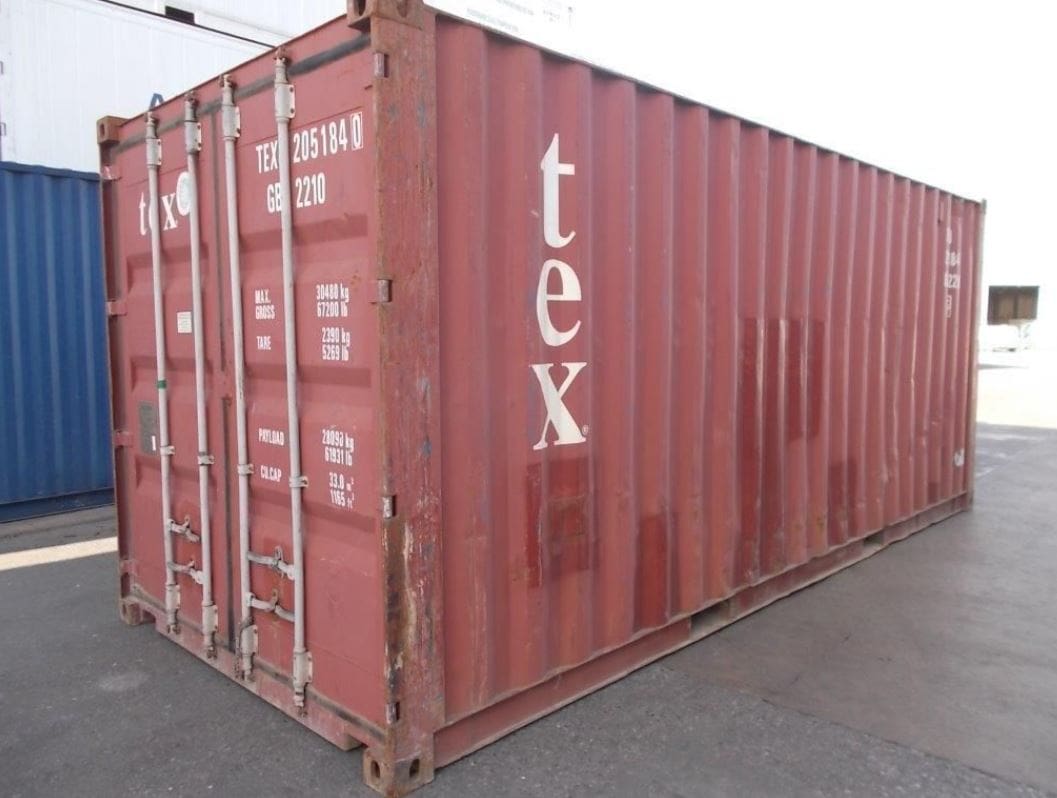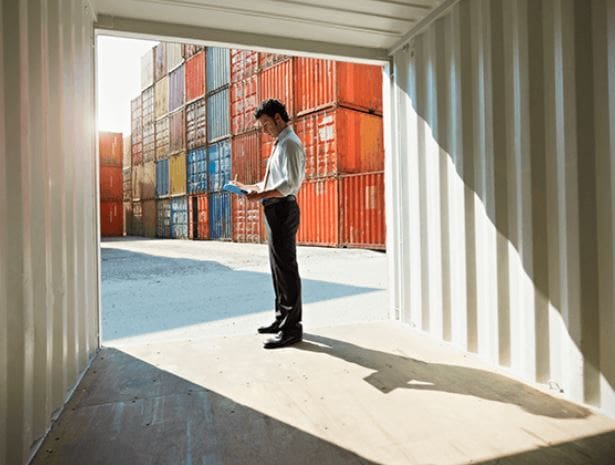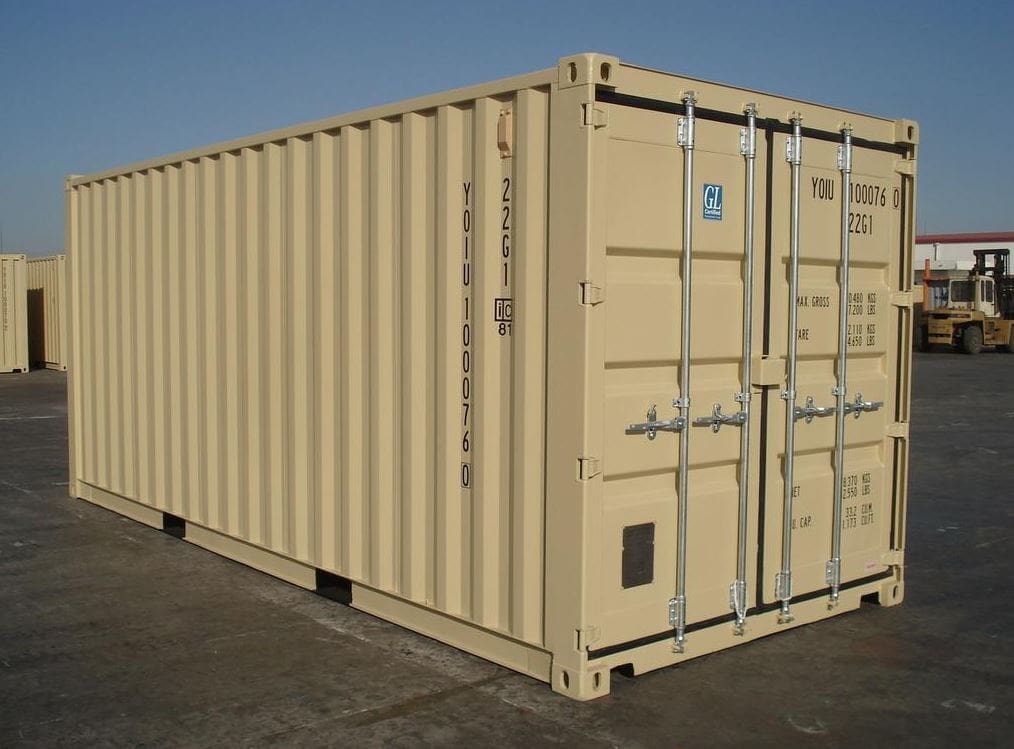Jump to:
- Understanding Your Needs
- Should You Purchase NEW or USED Condition
- Choose The Right Size
- Select the Container Type
- Shipping Container Costs: What to Expect
- Buying vs. Renting a Shipping Container: Which Is Right for You?
- What do I need to know about Delivery?
- Site Preparation Tips for a Smooth Shipping Container Delivery
- Tips for Choosing a Reliable Shipping Container Supplier
- Essential Tips for Maintaining Your Shipping Container
- Conclusion
Buying a shipping container can feel overwhelming, but it’s simpler than it seems. Let Container Sales Group guide you through each step, from understanding your needs, delivery, to finding the right container that is affordable and within your budget.
# 1. Understanding Your Needs
Shipping containers offer an affordable and versatile solution beyond just transporting goods.
The key question is whether you’re looking to buy a container for storage or for construction purposes. Many people repurpose them into offices, homes, vacation resorts, or garages. They’re also popular for retail spaces, pop-up shops, and restaurants. In emergencies, containers can be swiftly converted into shelters or portable medical facilities, including restrooms. They also have agricultural uses, such as being turned into greenhouses, or even unique swimming pools.
# 2. Should You Purchase NEW or USED Condition
New containers, also known as One Trip containers, have been used for a single shipment from the manufacturer. They are nearly pristine in appearance, highly durable, and come at a higher price compared to used containers. On the other hand, Used IICL or Cargo Worthy (CW) Containers have a valid CSC plate and are certified for ocean export. On the other hand, there are Used Water Wind Tight (WWT) Containers which are typically 10-15 years old, retired from the steamship lines and mostly used for storage. Though they may show signs of wear and rust, they remain water and wind tight making them durable and more affordable than New containers. Finally, AS-IS Containers represent the lowest grade available, often with damage and lacking any guarantee of being water and wind tight.
Here are some questions to consider when deciding between purchasing a new or used container:
- What is your budget? New containers are more expensive, while used containers offer a more cost-effective option.
- Is appearance important? New containers will be in pristine condition, while used ones may show signs of wear, rust, or dents.
- What will the container be used for? If appearance and condition are critical for your use (e.g., for a retail space or office), a new container might be more suitable. For storage or less visible applications, a used container may suffice.
- Do you need certification for overseas shipping? New, IICL, or Cargo Worthy containers are certified for export, while many used containers are not.
- What level of maintenance are you comfortable with? Used containers may require more upkeep due to wear and tear, while new containers will likely need less immediate attention.
- How quickly do you need container? Availability can fluctuate depending on timing and location.
These considerations can help you make an informed decision based on your needs and priorities.
Ready to purchase a shipping container? Reach out today to get a quote from the best in the industry!

# 3. Choose The Right Size
Standard Size
New/One-Trip and Used Shipping Containers generally come in two standard sizes (unless modified and cut into various lengths):
- 20 ft. in length x 8 ft. wide x 8 ft. 6 in. high: Ideal for small storage needs or compact spaces.
- 40 ft. in length x 8 ft. wide x 8 ft. 6 in. high: Provides more room and is suitable for larger storage or conversion projects.
High Cube Size
New/One Trip and Used Shipping Containers also come in 9 ft. 6 in. high.
- 20 ft. in length x 8 ft. wide x 9 ft. 6 in. high: Provides a smaller footprint but offers extra height for storing taller items.
- 40 ft. in length x 8 ft. wide x 9 ft. 6 in. high: Ideal for customers who need extra space and versatility.
# 4. Select the Container Type
Standard Shipping Containers have double doors on ONE END of the container. Below are the different types of specialized containers:
- Double Doors on BOTH ENDS of the container – also called Tunnel Containers – for easy loading and unloading. Sold as New/One-Trip.
- Open Sided containers have doors on ONE END and doors that open on the SIDE of the container. Doors can open the full width of the container or have four separate doors. Sold as New/One-Trip.
- Open Top containers have either a hard top that opens or a tarp. Sold as Used or New/One-Trip.
- Flat Rack containers have a floor but no side walls. Sold as Used or New/One-Trip.
- Refrigerated (Reefer) insulated containers can be running or non-running. Sold as Used or New/One-Trip.
Ready to purchase a shipping container? Reach out today to get a quote from the best in the industry!

# 5. Shipping Container Costs: What to Expect
The cost of a shipping container can vary widely based on size, location, and market demand. Here’s a rough idea:
- Used Containers can range from $1,200 to 3,500
- New/One-Trip can range from $2,800 to $7,800 (even higher for specialized containers)
# 6. Buying vs. Renting a Shipping Container: Which Is Right for You?
When deciding between buying or renting a shipping container, important factors to consider are your budget, long-term requirements, and intended use.
- Renting is great if you only need it for storage for a short period of time and you can return it when you done.
- Buying will cost you less money if you use it for storage for an extended period or permanently. Owning the container will allow you to modify if needed and can be a great investment.
Ready to purchase a shipping container? Reach out today to get a quote from the best in the industry!

# 7. What do I need to know about Delivery?
Before making your purchase, ensure you’re fully prepared for delivery. Shipping containers are quite heavy—20 ft. containers typically weigh around 5,000 pounds, while 40 ft. containers can weigh up to 8,000 pounds. You’ll need a solid foundation, such as a concrete pad or durable gravel base, to support the container. Additionally, verify that the delivery truck has sufficient space to unload the container at your location. Lastly, be sure to check local zoning regulations to confirm that placing a shipping container on your property is permitted.
There are various types of delivery trucks available for transporting containers:
- Tilt Bed Truck (Roll-Off or Landoll) – Used for delivery up to 200 miles. The bed of this truck will hydraulically lift behind the truck cab at an angle to let the container slide off with ease as the truck pulls forward. This means that the driver will arrive on-site and set the container on the ground with no additional equipment.
- Flatbed Truck or Step-Deck Trailer – For long delivery distances over 200 miles. Flatbed trucks mover standard containers and the Step-Deck Trailer moves High Cube containers that are 9’ 6” in height because of the highway height restrictions. The only downside to a flatbed or step-deck truck is it requires a forklift or crane to remove the shipping container from the truck at the time of arrival.
- Side Loader Truck or Truck Mounted Crane – Used for delivery up to 200 miles. A side loader is essentially a truck fitted with a loading system operating on one side for handling shipping containers. Great for delivery that needs to be fitted into a constricted space or over an obstruction like a wall or fence.
Ready to purchase a shipping container? Reach out today to get a quote from the best in the industry!

# 8. Site Preparation Tips for a Smooth Shipping Container Delivery
Make sure the delivery truck has easy access like proximity from the road, available space, and no potential obstacles. Also, your ground is dry, hard, and level with no muddy areas that could cause stability and sinking issues. If your ground is not firm and level the container doors may be hard to open and close.
Delivery Space
- Straight-line Space Needed using the Tilt Bed truck delivery.
- 1-75 ft. – for 1 x 20 ft. container
- 130-150 ft. – for 1 x 40 ft. standard or high cube container or 2 x 20 ft. containers moved together
- 12 ft. Width Clearance
- 16 ft. Height Clearance
Ground Preparation
If your ground is not level – consider placing wooden blocks or railroad ties under the 4 corner posts as the container is sliding off the back of the truck.
Container Placement
You will need to determine prior to delivery which way you want the doors of the container coming off the back of the roll off truck. Doors facing truckers cab (hitting ground last) or doors facing rear of truck (hitting ground first).
Do you need approval from your municipality?
It’s important to review local zoning laws and regulations regarding the placement of a container on your property.
Ready to purchase a shipping container? Reach out today to get a quote from the best in the industry!

# 9. Tips for Choosing a Reliable Shipping Container Supplier
With numerous options available, it’s essential to select a shipping container supplier with a proven track record of quality and reliability. Ensure they are transparent about pricing, provide clear details on warranties or guarantees, and thoroughly explain the purchasing process. A reputable dealer will not only offer high-quality containers but also excellent customer service. You can find a seller by searching Google, Craigslist, or seeking referrals from someone who already owns a container.
Avoid “SCAMMERS” by thoroughly vetting your shipping container supplier:
- Check if the company has been mentioned in the news or has any articles written about them.
- Ensure they have up-to-date Google Reviews to gauge customer satisfaction.
- Be cautious with warranties or guarantees like “1, 5, or 10-Year Warranties,” “Lifelong Leak Protection,” or “10-Year Frame Warranty.” Always read the fine print to understand any potential out-of-pocket costs.
- Watch out for deals that seem too good to be true, as they may signal a scam.
- Ask if they can provide an insurance certificate from their delivery companies.
- Be wary of sellers who impose hidden fees.
- Poor communication, such as delayed responses or difficulty reaching them by phone, can also be a red flag.
Ready to purchase a shipping container? Reach out today to get a quote from the best in the industry!

# 10. Essential Tips for Maintaining Your Shipping Container
Proper maintenance is key to extending the lifespan of your shipping container. By following these easy steps, you can ensure your container stays in top shape for years:
- Tackle rust spots early to stop them from spreading. Clean the area with a wire brush or sandpaper, apply a rust converter or primer, and finish with rust-resistant paint for added protection.
- Lubricate hinges and seals consistently to keep them functioning smoothly and prevent cracking or drying out.
- Clear debris from the roof regularly, such as leaves or branches, to prevent water accumulation, which can lead to rust and leaks.
- Examine the flooring for any signs of damage or rot, and repair or replace as needed.
Ready to purchase a shipping container? Reach out today to get a quote from the best in the industry!
Conclusion
CONTAINER SALES GROUP, buys shipping containers directly from the steamship lines to offer you the highest quality containers at the most competitive prices. We’re a women-owned business, established in 1998, and have locations throughout the United States. With our expert guidance, we’re here to help you every step of the way. Call us at 708 639-4783
